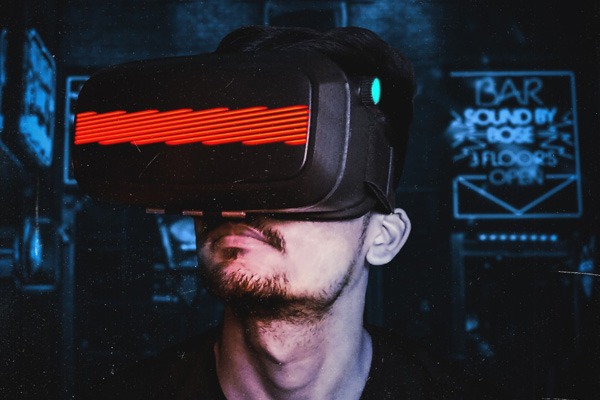
Digital Life with AR
We all remember the infamous Pokémon Go in 2017 that made us walk miles just to catch Pokémons. We were so in awe of those little Pokémons appearing on our roads and our scores on the game increasing every time we catch a Pokémon. Honestly, that was one game that made us get up from our couches.
Those pokémons appearing on the streets, that’s the magic of Augmented Reality!
The same applies to the camera filters that you see everyone using today. Augmented Reality is how the app detects your face and adds the effect.
WHAT IS AUGMENTED REALITY?
Augmented Reality (shortly known as AR) is where your real view is augmented by computer-generated information which can be visual, smell, sound or felt.
Augmented Reality is a ground-breaking technology which can be helpful in various fields.AR changes one’s understanding of reality. It has the power to alter
the real-life scenarios and merge it with some additional digital graphics.
- BASIC COMPONENTS OF AUGMENTED REALITY:
- Sensors and Cameras — Sensors are essential for helping the users to have a more realistic feel to the AR. Cameras are needed for capturing images and videos which will assist the AR device.
- Projection — Since AR is all about mixing up virtual and reality together, a projection is highly necessary to be able to overlap the two.
- Processing — AR devices are basically mini-supercomputers fit into wearable devices. The AR devices need the common processing units that our computer use CPU, GPU, RAM, etc.
- Reflection — Mirrors in the form of the holographic lens are used in AR devices to help the device in making the virtual image reach our eye.
DIFFERENCES BETWEEN AR AND VR
Many at times, we confused Augmented Reality and Virtual Reality. The main difference between these two is that AR is a mix of real environment and computer-generated information whereas, VR fully replaces the real environment with a computer designed one. Augmented reality is controlled by a touchpad or voice commands. Voice commands are used in Google Glass Augmented Reality Device.
THE DIVERSITY OF AUGMENTED REALITY
- Augmented Reality is useful in many fields including healthcare, education, archaeology and so on.
- Archaeology — AR helps archaeologists is visualizing the ruins, buildings and landscape.
- Architecture — It is used by architects for planning how the construction should be done and for detailed analysis of the future structure that is going to be set up.
- Commerce — AR is used to improve the print and video making that is essential in e-commerce.
- Education — Text, graphics, video and audio are superimposed with the student’s taught real-life ideas which will help in increasing the understanding of the particular topic.
- Medical — Since 2005, a device called a near-infrared vein finder is used that films subcutaneous veins, processes and projects the image of the veins onto the skin which helps in locating the veins.
- Military and Navigation — AR can be used for communication between soldiers during combat. It can also show the potential dangers by scanning.AR maps and a 360-degree camera can really help soldiers in their navigation.
THE CHALLENGES WITH AUGMENTED REALITY
- Every time there is an evolving technology, there will also be some weak points that will be exploited. It’s the same with Augmented Reality as well.
- Developing new technology is generally expensive. Even with AR, it is expensive to maintain as well. AR is a combination of both hardware and software requirements which is costly.
- Lack of privacy is an issue as well. In order for the technology to work well, it is necessary to obtain few details which may seem like a breach to privacy. For example, if it’s a device which can perform voice modulation, it will be hearing what you say at all times to change the voice and repeat it back. This might lead to it capturing conversations which weren’t meant for the device. This data is stored and used by the company for analysis of their client base.
- Sometimes the AR is not tested properly due to which there is a low performance issue in the final software which is given to users. If the AP doesn’t have accuracy and fast performance, it would frustrate the users. Augmented Reality is a great help in many fields as shown above. It is a great technological advancement which can be an asset in our day to day lives. The challenge is how can we make use of this and build something greater.
About the Author
Gopika Anand
